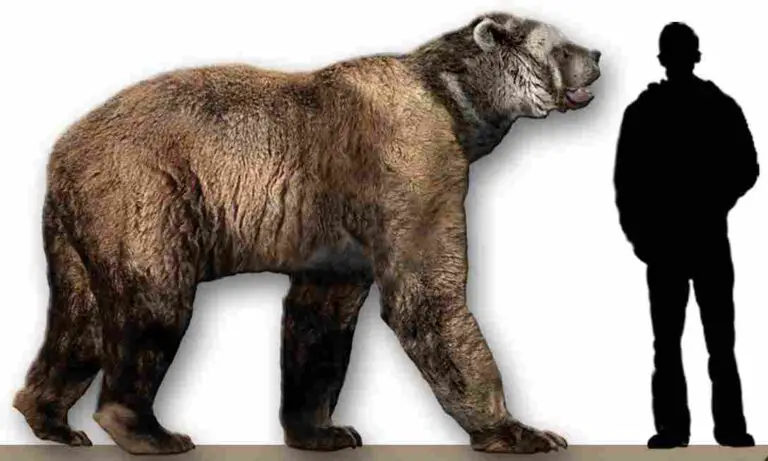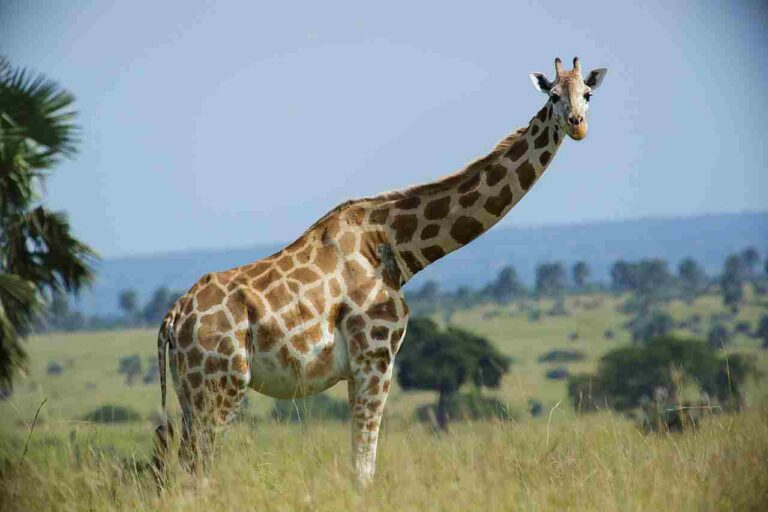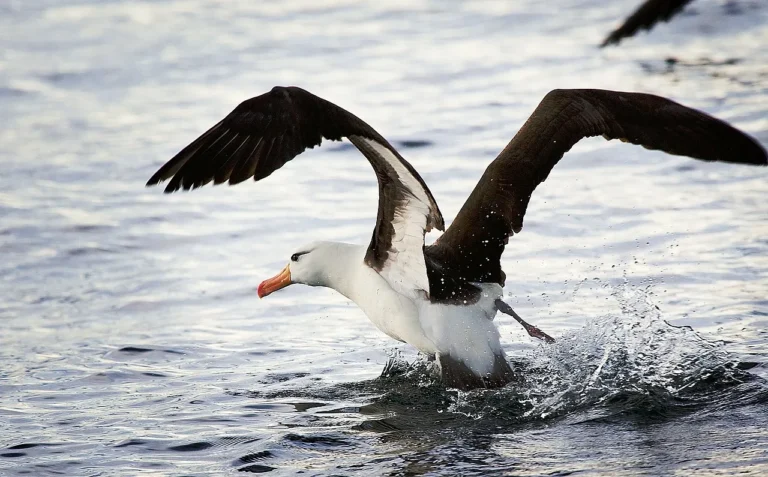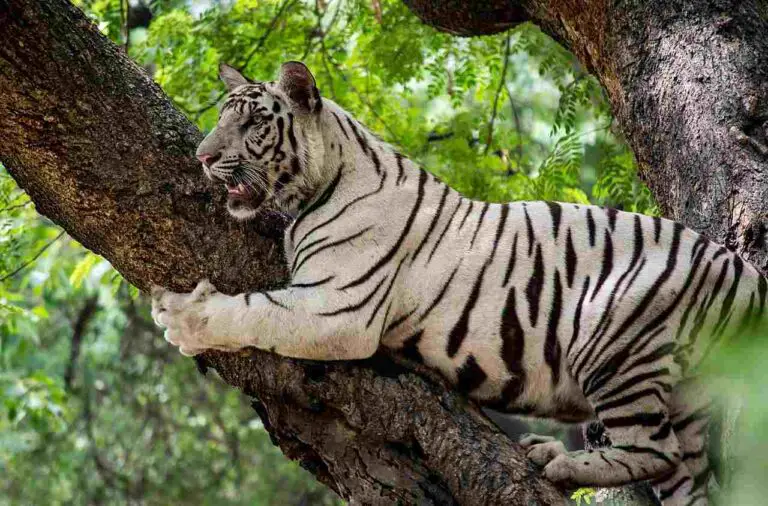23+ Dangerous Animals In Missouri And Their Characteristics
Examples of dangerous animals in Missouri include the Copperhead Snake, Timber Rattlesnake, Western Cottonmouth, Eastern Massasauga Rattlesnake, Black Widow Spider, Brown Recluse Spider, and American Black Bear. These animals pose various risks, such as venomous bites, aggressive behavior, or potential attacks when threatened. While some, like the White-tailed Deer, are hazardous due to vehicle collisions, others, like the Great Horned Owl or the Mountain Lion, can become aggressive near their nesting or territorial areas. It’s important to maintain a safe distance, avoid provoking these animals, and respect their habitats to ensure personal safety and the well-being of the wildlife in Missouri.
1. Copperhead Snake
The Copperhead snake (Agkistrodon contortrix) is one of the most common venomous snakes in Missouri, easily recognized by its coppery brown coloration and distinctive hourglass-shaped bands. Although its venom is not typically fatal to humans, it can cause severe pain, swelling, and tissue damage, requiring prompt medical attention. Copperheads are typically found in wooded areas, rocky hillsides, and near streams or rivers, where they blend in with their surroundings. Their behavior is generally non-aggressive, but they will bite if provoked or accidentally stepped on, making them a potential hazard for hikers and outdoor enthusiasts. If encountered, it’s best to keep a safe distance and allow the snake to move away on its own.
2. Timber Rattlesnake
The Timber Rattlesnake (Crotalus horridus) is among the largest venomous snakes in Missouri, known for its distinctive rattling tail and dark crossband pattern on a tan or grayish background. It inhabits remote forested areas and is less commonly encountered than other snakes. Despite its intimidating appearance, the Timber Rattlesnake generally avoids human contact, preferring to warn off threats with its rattle before striking. However, when provoked or cornered, it can deliver a potent bite, causing severe pain and potential complications. Caution is advised when exploring wooded areas or rock outcrops, and if a Timber Rattlesnake is seen, give it a wide berth and do not disturb it.
3. Western Cottonmouth
The Western Cottonmouth (Agkistrodon piscivorus), also known as the Water Moccasin, is a venomous snake frequently found in and around bodies of water in Missouri. It has a thick, muscular body with a dark, olive-green coloration and a lighter underbelly. Named for its white, cotton-like mouth lining, which it displays as a warning, the Cottonmouth is known for its defensive posture and potentially aggressive behavior. Its bite can be very painful and may require medical treatment. Caution should be exercised near swamps, lakes, and rivers, where these snakes are most commonly found. If encountered, it’s best to avoid sudden movements and maintain a safe distance.
4. Eastern Massasauga Rattlesnake
The Eastern Massasauga Rattlesnake (Sistrurus catenatus) is a smaller, venomous rattlesnake species native to Missouri’s wetlands and grasslands. It has a distinct rattle at the end of its tail, with a grayish-brown body marked by dark, saddle-like bands. While generally reclusive and non-aggressive, it can become defensive if threatened, delivering a venomous bite that can cause pain and swelling. The Eastern Massasauga is an endangered species, and conservation efforts are in place to protect its habitat. If you come across this snake, do not approach or attempt to handle it, and report any sightings to local wildlife authorities to aid conservation efforts.
5. Black Widow Spider
The Black Widow spider (Latrodectus mactans) is one of the most venomous spiders in Missouri, easily identified by its shiny black body and distinctive red hourglass marking on its abdomen. This spider is usually found in dark, undisturbed areas like woodpiles, sheds, and basements. Though its bite is rarely fatal, it can cause intense pain, muscle cramps, nausea, and other severe symptoms that may require medical attention. Black Widows are generally non-aggressive but can bite when disturbed or provoked. If you encounter a Black Widow spider, exercise caution, and avoid reaching into areas where they might be hiding.
6. Brown Recluse Spider
The Brown Recluse spider (Loxosceles reclusa) is another dangerous arachnid found in Missouri, characterized by its brown color and a violin-shaped marking on its back. It prefers dark, undisturbed areas such as closets, attics, and basements. The bite of a Brown Recluse can cause necrotic skin ulcers, with symptoms like fever and severe pain. If bitten, medical attention should be sought immediately to prevent complications. Brown Recluses are reclusive by nature, but they may bite when trapped or squeezed. To reduce the risk of encountering one, keep living spaces clean and clutter-free, and avoid reaching into hidden areas without proper lighting.
7. American Black Bear
The American Black Bear (Ursus americanus) is Missouri’s largest native mammal and can be found in heavily forested regions. Although generally shy and avoiding humans, they can become aggressive if they feel threatened, especially when protecting cubs or food sources. Black Bears are omnivorous and may be attracted to outdoor food sources, garbage, or bird feeders. If you encounter a Black Bear, do not run; instead, back away slowly and make loud noises to alert the bear to your presence. Avoid leaving food out in campsites or residential areas to reduce the risk of bear encounters.
8. Wild Boar
Wild Boar (Sus scrofa), also known as feral pigs, are an invasive species in Missouri and can be quite dangerous due to their aggressive nature and large tusks. These animals are known for their destructive rooting behavior, which can cause extensive damage to crops and ecosystems. Wild Boars can be aggressive toward humans, particularly if they feel cornered or are protecting their young. If you encounter a Wild Boar, maintain a safe distance and do not approach it. Hunting programs are in place to control their population and minimize their impact on the environment.
9. Bobcat
The Bobcat (Lynx rufus) is a medium-sized wildcat native to Missouri’s forests and grasslands. With its tufted ears and spotted coat, the Bobcat is a skilled predator that primarily hunts small mammals and birds. Although generally elusive and avoiding humans, Bobcats can be dangerous if cornered or rabid. If you encounter a Bobcat, do not approach it, and keep pets and livestock secure to prevent attacks. Bobcats are most active during dawn and dusk, so extra caution should be taken during these times.
10. Coyote
The Coyote (Canis latrans) is a versatile and adaptive predator found throughout Missouri. Coyotes are known for their cunning and resourcefulness, often preying on small mammals, birds, and occasionally livestock or pets. While generally avoiding humans, they can be aggressive when threatened or if they associate people with food. To reduce the risk of coyote encounters, secure garbage, keep pets indoors or supervised, and avoid feeding wildlife. If you see a coyote, do not run; instead, make loud noises and maintain eye contact to encourage it to leave.
11. Red Fox
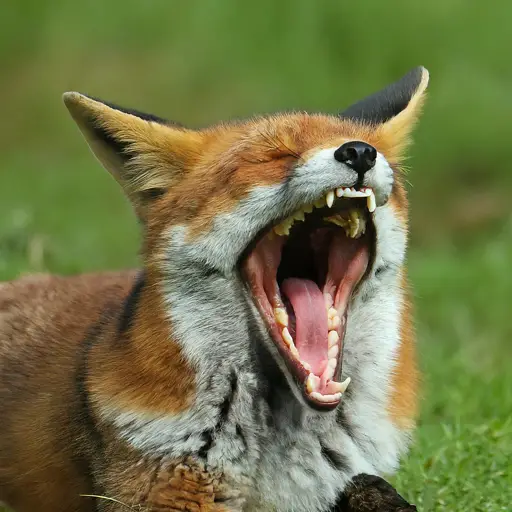
The Red Fox (Vulpes vulpes) is a common carnivore in Missouri, with a distinctive red coat and bushy tail. While typically shy and avoiding humans, Red Foxes can become a nuisance when scavenging for food in residential areas. They may pose a threat to small pets or livestock and can be aggressive if they feel threatened or have rabies. To minimize Red Fox encounters, keep garbage and pet food secure, and avoid leaving food outside. If a Red Fox is acting aggressively or behaving erratically, it may be rabid, and you should contact animal control authorities immediately.
12. Striped Skunk
The Striped Skunk (Mephitis mephitis) is well known for its ability to spray a foul-smelling liquid when threatened. Found throughout Missouri, these skunks are usually nocturnal and avoid humans but may wander into residential areas in search of food. While not typically aggressive, skunks can transmit rabies, making them potentially dangerous if they bite or scratch. If you encounter a Striped Skunk, do not attempt to scare it away, as this can provoke a spray response. To avoid attracting skunks, secure garbage and remove potential nesting sites near your home.
13. Beaver
The Beaver (Castor canadensis) is the largest rodent in North America and is found in Missouri’s waterways and wetlands. Known for their dam-building skills, beavers can alter the landscape by creating ponds and changing the flow of rivers. Although generally peaceful, beavers have sharp teeth and powerful jaws, and they can be aggressive when defending their territory or protecting their young. If you encounter a beaver, maintain a safe distance, and do not approach its dam or lodge. Beavers can also cause property damage by felling trees and flooding areas, so proper management is necessary to prevent conflicts.
14. Missouri River Otter
The Missouri River Otter (Lontra canadensis) is a playful and agile mammal found in Missouri’s rivers and lakes. While generally not a threat to humans, River Otters are strong swimmers with sharp teeth and claws, and they can be aggressive if they feel threatened or are protecting their territory. They are known to prey on fish and other small aquatic animals, which can sometimes lead to conflicts with fishermen. If you encounter a River Otter, it’s best to observe from a distance and avoid disturbing its habitat. River Otters are a protected species, and it’s important to respect their role in maintaining aquatic ecosystems.
15. White-tailed Deer (due to vehicle collisions)
The White-tailed Deer (Odocoileus virginianus) is abundant throughout Missouri, known for its distinctive white tail and graceful movements. Although not inherently dangerous, these deer can pose a significant risk to drivers due to their tendency to cross roads unexpectedly. Vehicle collisions with deer can cause serious accidents, resulting in injuries or fatalities. To reduce the risk of collisions, drivers should be especially cautious during dawn and dusk, when deer are most active. Use high-beam headlights when appropriate, and watch for deer crossing signs in high-traffic areas. If a collision with a deer is unavoidable, slow down and brace for impact without swerving, as sudden maneuvers can lead to more dangerous outcomes.
16. Bald Eagle (potentially aggressive near nests)
The Bald Eagle (Haliaeetus leucocephalus), the national bird of the United States, is found throughout Missouri, particularly near large bodies of water. Although admired for its majestic appearance and powerful presence, Bald Eagles can become aggressive when defending their nests. These birds of prey have sharp talons and strong beaks, which can cause injury if they perceive a threat to their eggs or young. If you encounter a Bald Eagle near its nesting site, maintain a safe distance and avoid any sudden movements that could be seen as threatening. Respect protected areas and adhere to guidelines that protect Bald Eagle habitats to ensure both your safety and the well-being of this iconic species.
17. Great Horned Owl
The Great Horned Owl (Bubo virginianus) is one of the largest owls in Missouri, recognized by its tufted “horns” and deep hooting calls. This nocturnal predator preys on small mammals and birds, but it can be aggressive if it feels its nest is threatened. Its powerful talons and sharp beak can cause injury if it perceives a threat. If you encounter a Great Horned Owl, maintain a safe distance, especially near nesting areas. Do not approach or disturb nests, and be cautious during early spring when owls are most protective of their young.
18. Red-tailed Hawk
The Red-tailed Hawk (Buteo jamaicensis) is a common bird of prey in Missouri, known for its broad wings and reddish-brown tail. These hawks primarily prey on small mammals and can be seen perched on utility poles or soaring over open fields. Though generally not aggressive toward humans, Red-tailed Hawks can become defensive if their nest is threatened. They have sharp talons and powerful beaks, which can cause injury. To avoid conflicts, stay clear of nesting areas, and do not attempt to handle or feed these birds.
19. Peregrine Falcon
The Peregrine Falcon (Falco peregrinus) is one of the fastest birds in the world, known for its incredible hunting speed and agility. In Missouri, it is typically found in urban areas and along cliffs. Although not inherently dangerous to humans, Peregrine Falcons can become aggressive when defending their nesting sites, particularly during the breeding season. Their powerful talons and sharp beaks can cause injury if they perceive a threat. When observing Peregrine Falcons, maintain a safe distance and avoid disturbing their nests or young.
20. Common Snapping Turtle
The Common Snapping Turtle (Chelydra serpentina) is one of the largest freshwater turtles in Missouri, with a reputation for aggression when provoked. It has a large head, a long tail, and strong jaws capable of inflicting serious bites. Snapping Turtles are typically found in ponds, lakes, and rivers, often hiding in the mud. Although generally slow-moving, they can strike quickly if threatened. If you encounter a Snapping Turtle, do not attempt to pick it up or handle it. Keep pets and children away from these turtles, and allow them to move on their own.
21. Mississippi Kite
The Mississippi Kite (Ictinia mississippiensis) is a graceful bird of prey found in Missouri, particularly during the summer breeding season. These kites are known for their aerial acrobatics and slender wings. While generally not aggressive toward humans, Mississippi Kites can become protective of their nests, diving at perceived threats to defend their territory. If you encounter a Mississippi Kite exhibiting defensive behavior, move away and avoid lingering near its nesting area. Respect their space, especially during the nesting season, to prevent conflicts.
22. Mountain Lion
The Mountain Lion (Puma concolor), also known as the Cougar, is a large and elusive predator occasionally found in Missouri’s wilderness areas. Although sightings are rare, Mountain Lions can be dangerous, especially if they feel threatened or are protecting their territory. These big cats are strong and agile, capable of preying on large mammals. If you encounter a Mountain Lion, do not run; instead, make yourself look larger and back away slowly while maintaining eye contact. Avoid hiking alone in isolated areas, and carry bear spray or other deterrents when exploring wilderness regions.
23. Badger
The Badger (Taxidea taxus) is a stocky, ground-dwelling mammal found in Missouri’s prairies and grasslands. It has powerful claws for digging and a strong bite, making it potentially dangerous if provoked. Badgers are generally reclusive but can become aggressive if they feel threatened or are protecting their burrows. If you encounter a Badger, keep a safe distance and avoid approaching its burrow. Badgers can be beneficial to the ecosystem by controlling rodent populations, so it’s best to observe them from afar and not disturb their habitat.
24. River Musk Turtle
The River Musk Turtle (Sternotherus odoratus), also known as the Stinkpot, is a small turtle found in Missouri’s rivers and wetlands. It gets its name from the musky odor it emits when threatened. While not aggressive, the River Musk Turtle can bite if handled or provoked, and its bite can cause injury. It is generally slow-moving and reclusive, preferring to stay hidden in aquatic vegetation. If you encounter a River Musk Turtle, do not attempt to handle or pick it up, as it may bite. Allow it to move on its own and avoid disturbing its habitat.
| Animal | Description |
| Copperhead Snake |
Venomous snake with coppery coloration and hourglass-shaped bands. Can cause severe pain and swelling.
|
| Timber Rattlesnake |
Large venomous snake with rattling tail. Generally avoids humans but can bite if provoked.
|
| Western Cottonmouth |
Venomous snake often found near water. Known for its white, cotton-like mouth lining.
|
| Eastern Massasauga Rattlesnake |
Smaller venomous snake with a grayish-brown body and dark bands. Prefers wetlands and grasslands.
|
| Black Widow Spider |
Venomous spider with a black body and red hourglass marking. Can cause severe pain and other symptoms.
|
| Brown Recluse Spider |
Venomous spider with a brown body and violin-shaped marking. Causes necrotic skin ulcers.
|
| American Black Bear |
Missouri’s largest mammal. Generally shy but can be aggressive when threatened.
|
| Wild Boar |
Invasive species with large tusks. Known for destructive rooting behavior. Can be aggressive.
|
| Bobcat |
Medium-sized wildcat. Usually elusive but can be dangerous if cornered or rabid.
|
| Coyote |
Versatile predator. Generally avoids humans but can be aggressive when threatened.
|
| Red Fox |
Common carnivore with a red coat and bushy tail. Can be aggressive if rabid.
|
| Striped Skunk |
Known for its foul-smelling spray. Can transmit rabies if it bites or scratches.
|
| Beaver |
Largest rodent in North America. Can be aggressive when defending territory.
|
| Missouri River Otter |
Playful aquatic mammal. Can be aggressive if it feels threatened.
|
| White-tailed Deer |
Common deer species. Poses a risk due to vehicle collisions.
|
| Bald Eagle |
Iconic bird of prey. Can become aggressive near nesting sites.
|
| Great Horned Owl |
Large owl with tufted “horns.” Can be aggressive when defending nests.
|
| Red-tailed Hawk |
Common bird of prey. Can become defensive near nesting sites.
|
| Peregrine Falcon |
Fast and agile bird of prey. Can be aggressive near nests during breeding season.
|
| Common Snapping Turtle |
Large freshwater turtle with a reputation for aggression. Has strong jaws capable of inflicting bites.
|
| Mississippi Kite |
Graceful bird of prey. Can dive at perceived threats to defend its territory.
|
| Mountain Lion |
Large and elusive predator. Can be dangerous if it feels threatened or is protecting its territory.
|
| Badger |
Ground-dwelling mammal with powerful claws. Can become aggressive if provoked.
|
| River Musk Turtle |
Small turtle known for its musky odor. Can bite if handled or provoked.
|









